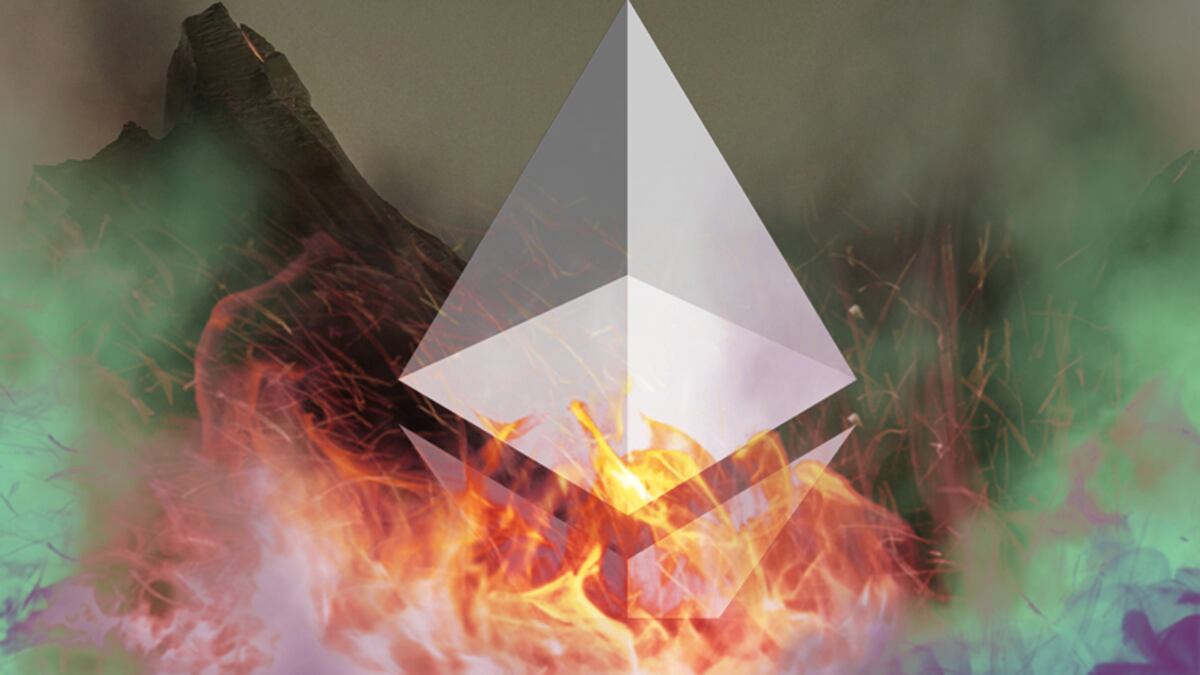- It's been 1,000 days since Ethereum first started burning transaction fees.
- But the mechanism, which offsets new tokens issued on the network, is slowing down.
- More efficient transactions, an explosion of activity on layer 2 networks, and the recent Dencun upgrade have all helped reduce the amount of Ether the network burns.
With the implementation of an upgrade known as EIP-1559 as part of the London hard fork in August 2021, Ethereum became the first blockchain to start burning a portion of the fees users spend on transactions.
That was 1,000 days ago.
The move, the blockchain’s faithful hoped, would help counterbalance the issuance of new Ether tokens on the network, creating a more sustainable monetary policy.
And it worked. Over the following 1,000 days, Ethereum users have burnt some 4.3 million Ether, worth over $12.7 billion just by using the network.
When Etherum slashed Ether emissions by switching to a proof-of-stake consensus mechanism in September 2022, the network became deflationary — meaning more Ether was, on average, burned by the network than new Ether was issued.
But in recent months the rate at which Ethereum is burning tokens is slowing.
A combination of more efficient transactions, an explosion of activity on layer 2 networks, and the recent Dencun upgrade have all helped reduce transaction fees — and thus the amount of Ether the network burns.
The lower fees are great for users. But if Ethereum can’t attract enough activity to offset the drop, it could easily lose its deflationary status, potentially throwing its economic model into question.
Why is the burn slowing?
When Ethereum users transact on the network they must pay a fee denominated in Ether.
This fee is made up of two parts: a so-called base fee charged by the network, and a priority fee, paid to block builders as an incentive to get the transaction processed faster. Ethereum burns base fees, and gives priority fees to those processing transactions.
When activity on Ethereum increases, the network automatically raises the base fee users must pay.
The average base fee on Ethereum must stay above 23 gwei these days to ensure the network burns enough Ether from transaction fees to keep it deflationary. Gwei is a measurement for small amounts of Ether.
Over the past 1,000 days, gas fees have averaged 41 gwei. If this trend continues, Ethereum’s supply is set to shrink by 0.76% over the coming year.
But there’s reason to believe it might not.
Ethereum’s March 13 Dencun upgrade introduced a new feature that cut the fees Ethereum layer 2s needed to pay to submit transactions to the main Ethereum network by as much as 98%.
Since Dencun, Ethereum’s transaction fees have fallen from an average of 58 gwei on March 13, to just 7 gwei on May 2.
Additionally, more users are making the jump from Ethereum to layer 2 networks — separate blockchains built on top of Ethereum that rely on it for security.
After hitting an all-time high of over 11 million weekly transactions in 2021, transactions on Ethereum have slowly declined to around 8 million per week at the end of March.
At the same time, weekly transactions on Arbitrum and Optimism, the two biggest layer 2s, have soared to a combined 18.5 million.
With fewer users transacting on Ethereum, the demand for transactions — and thus fees paid on the network — is falling.
Increasing gas efficiency
Code improvements that reduce the amount of data smart contracts on Ethereum need to handle, should also reduce fees in the coming months.
For example, decentralised exchange Uniswap, the most frequently used Ethereum DeFi protocol which users have spent over $1.4 billion in fees transacting on, has included several optimisations for its upcoming Uniswap v4 version.
V4 is expected to improve gas efficiency between swaps and liquidity operations, as well as reduce the cost of creating new liquidity pools by 99%.
Future versions of other top Ethereum protocols will likely also optimise for transaction fees.
Tim Craig is a DeFi Correspondent at DL News. Got a tip? Email him at tim@dlnews.com.
